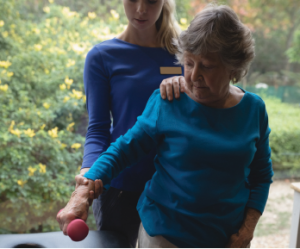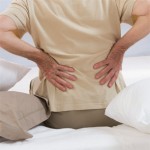
WavebreakMedia / offset
“Don’t believe everything you think,” said Allan Lokos, the founder and guiding teacher of the Community Meditation Center located in New York City’s upper west side. These words may be especially important for those dealing with chronic pain, finds new multicenter research.
The study, “Trajectories of Fear-Avoidance Beliefs on Physical Activity Over Two Years in People with Rheumatoid Arthritis,” appeared in the May 2018 issue of Arthritis Care & Research.1 Researchers from Sweden and the U.S. set out to explore the relationship between beliefs about pain and physical activity in patients with rheumatoid arthritis (RA), a topic that, to date, has had limited attention in the literature.
The researchers enrolled 2,569 RA patients (77% women, mean age 58 years), all of whom completed the Fear-Avoidance Beliefs Questionnaire physical activity subscale (FABQ-PA). Principal investigator Christina H. Opava, PhD, RPT, is director of Strategic Research Area Health Care Science and chair of Doctoral School in Health Care Sciences at the Karolinska Institutet in Sweden. With patients recruited from the Swedish Rheumatology Quality registers, the investigators set out to shed light on patients with differing trajectories of fear-avoidance beliefs over two years and predictors for each trajectory.
Dr. Opava states, “For 40 years I have been researching the importance of psychosocial factors for physical activity. My colleagues and I wanted to better understand why, despite the achievement of better inflammation control via medications, there remain many RA patients who report significant levels of pain and fatigue. Specifically, we wanted to examine what leads many of these patients to avoid physical activity.”

Dr. Opava
Dr. Opava says, “We looked at changing patterns in this large sample and ended up with a diagram where each line represents one patient, and they cluster together in certain ways. So if you group them according to clusters, then you get trajectories. We chose a three-trajectory solution that makes sense, both clinically and statistically. Included were four items from the FABQ-PA on beliefs about physical activity causing pain and injury: 1) pain is caused by physical activity, 2) physical activity makes one’s pain worse, 3) physical activity might be harmful, and 4) one should not do physical activity that might worsen one’s pain.
“The scale went from 0 (do not agree at all) to 6 (agree); values over 15 have been shown to indicate high fear avoidance. Three trajectories of fear-avoidance beliefs were identified: low (mean FABQ-PA=3), moderate (mean FABQ-PA=9) and high (mean FABQ-PA=15).”



